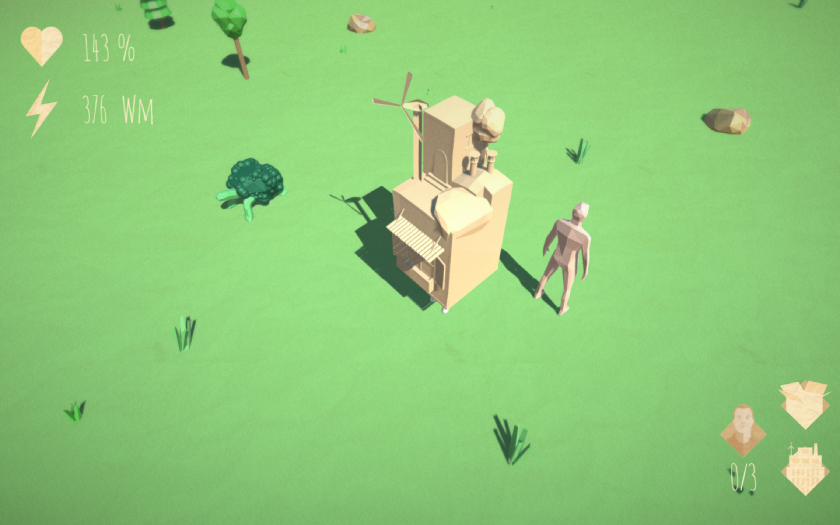Grow Up is a game by Samson Auroux and can be found at time of writing at this page for “pay-what-you-want”. Note for you English-exclusive speakers, Grow Up is currently only available in French.

It would be easy to write off Grow Up (2016) as a half-baked experiment thrown together to meet the criteria of a school project. And from what I can tell, Grow Up is in fact a school project by a new medias student by the name of Samson Auroux. From what I can muster from his limited online presence he focuses more so on illustration than game design. Outside of Itch.io, a wordless Youtube trailer and some 3D models posted to Tumblr, Auroux hasn’t really talked about the game or it’s development. In fact I can’t even really tell if the game is “finished”, abandoned as is or, still being worked on. Grow Up certainly has game mechanics that seem underdeveloped, or even pointless, but I feel like to focus on those deficiencies will cause you to miss a cool little project that’s worth the time it takes to try it out. Auroux is a visual design student, and in that department Grow Up’s low-fi aesthetic is both visually arresting and thematically impactful.

Grow Up has a wicked slick visual design. Just look at the tool-animal hybrid monsters. There’s both a kind of visual repulsion and some black comedy in seeing a penguin with a pickaxe for a head. Or an atomic turtle with a molecule like structure for a shell. Grow Up’s visual motifs are this blend of the natural and the artificial in a refreshingly surrealist way. The player character is a rectangular city block that can pop up its body to walk around on these tiny human legs. The player pilfers natural resources to turn them into industrial structures like apartments, wind turbines and nuclear power plants. Yet these buildings aren’t incorporated into the play environment, watercolour depictions of them are painted onto the cream-white blank page, rewarding you with the ability to collect more resources. If the player succeeds in managing their tasks the player character will grow in size. But not outwards like a city would, but straight up in height like the man hidden under the houses.
This blend also is reflected in how the politics of the game plays out thematically. At first the player may think the game is a critique of industrial development and its impact on the natural world. And that reading is certainly present in the game. The play environment is stripped mined aggressively by the player to keep up with the demands of human growth. The pristine white map of the building is increasingly sullied as you play with the dark inky black structures. The animal hybrids colour the natural world as mere tools of industrial purposes.
Although, when the player gets good at Grow Up they’ll actually find that there is a kind of sustainability to the industrial growth in the game. There is far more resources littered around the map then you’ll need to reach the extent of the city’s growth. It is capable to get the cities health and energy levels an order of magnitude stronger than at the start of the game and your human population will come to self-sustain some of that progress. I’m sure if you played Grow Up for hours and hours you would eventually fail to meet your populations’ demands and reach the failstate. But it would take an order of magnitude of more time to achieve that as it does to merely reach full city size.

If Auroux was intending this to be the environmental critique I think he might have intended, Grow Up’s mechanics do ultimately quiet that criticism. There are actually antithetical meanings to Grow Up depending on whether the player completes the objectives. Those who fail see a very clear message of industrial civilization as a doomed phenomenon. Those who succeed see potential of long lasting, self-sufficient, happy cityscape.
If Auroux is just making Grow Up to show the professor his ability to convey meaning through 3D modelling, he certainly succeeded. There is thematic meaning and charm to his visual work here which are mighty hard to capture at the same time like this. If Auroux has it out to work in games, this shows he on the first steps of what could be a very promising career as an art director at the least.
